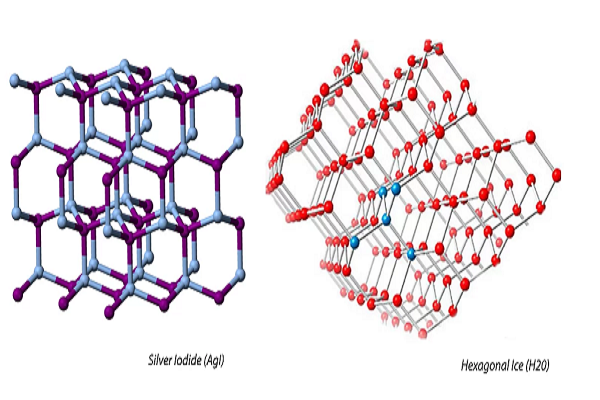
With the environmental crisis worsening, more places will be impacted by harsh weather conditions.
AP reported that if the planet heats up an additional 3.4 ℉ (2 ℃), future generations will experience “five times the floods, storms, drought and heatwaves, according to a group of scientists at the IPCC.”
Aside from the world’s governments coming together to limit emissions and fossil fuel use, managing waste and pollution and finding a renewable energy source to save the environment, there may already be a possible solution to droughts. Welcome to cloud seeding.
Cloud seeding is a process in which substances like silver iodide are flown or shot into cloud formations, mimicking existing ice crystalline structures, according to Desert Research Institute (DRI).
“The silver iodide acts as condensation nuclei to aid in the formation of snowflakes,” DRI stated on its website. The ice nuclei help the cloud produce more precipitation than it would have otherwise.
Silver iodide is a natural salt compound that has a very similar geometric shape to ice crystals on a molecular level, according to CNN writers Jennifer Gray and Rachel Ramirez. They also wrote that silver iodide is not a substance that is harmful to humans.

Cloud seeding is done during the winter months of November through March. One way cloud seeding occurs is by flying planes into clouds to inject them with silver iodide. Its goal is to increase snowfall precipitation that will be stored in water reservoirs.
In the United States, many states such as Wyoming, rely on precipitation from snowfall stored on snowcapped mountains for much of their water, DRI posted.
According to WaterCalculator.org, roughly half of global freshwater and about 75% of water in the American West comes from snowcapped mountains as the snow accumulated over the winter melts during the spring and early summer months. Snowcaps, however, are becoming less reliable due to climate change. As the snowcaps become less reliable and droughts become more likely to worsen, there is an imminent need to find ways to supply one of the most important substances on Earth, which may be done by cloud seeding.
CNN said that a goal of cloud seeding is to go into droughts with a little bit of extra water reserved. If it can cause moist clouds to produce more snow, that could mean more snow stored on snowcaps which can increase the amount of water that will be released with the annual thawing from spring and summer.
Cloud seeding cannot eliminate droughts, but it can hopefully improve conditions. Some, however, wonder if it is ethical or worth it.
Some scientists and critics of cloud seeding believe it is humans trying to “play God” by controlling the weather. Others worry that the environmental costs of the fuel planes require to fly outweigh the pros of possible excess moisture, not to mention the monetary cost of seeding. Still, others worry that it is essentially robbing rain from another place.
“It is possible that you’re actually stealing water from someone else when you do this, because it may be, at least on a regional basis, a zero-sum game where if water falls out of the cloud in one spot, it’s even drier by the time it makes it downwind to the next watershed,” said Daniel Swain, a climate scientist, to CNN.
Dr. Al Fischer, an assistant professor of chemistry at WCU who specializes in analytical chemistry, is more skeptical on cloud seeding.
“I’m always skeptical of these approaches. Just thinking in terms of the water cycle, cloud seeding increases the precipitation component, but doesn’t directly affect other parts,” he said in an email. Dr. Fischer said that “assuming the evaporation [and] transpiration component stays constant, it would seem cloud seeding doesn’t really increase precipitation, but rather move it from one place to another.”
Another concern is that cloud seeding isn’t effective enough to merit it.
The Colorado Sun reported that research into seeding cumulus clouds showed little to no results but some winter orographic clouds that form over mountains did have positive cloud seeding results.
The results of cloud seeding vary. Australia has reported up to 14% increases in precipitation rates, the United Arab Emirates has claimed success in cloud seeding, and the CNN article linked above estimated an extra 2% in precipitation brought to the surface in Wyoming.
Scientists cannot test how much precipitation a cloud would have produced prior to seeding, so they can only measure it based on any rainfall. Cloud seeding is also very dependent on other factors, said Jeff French, a University of Wyoming professor, to WyomingPublicMedia.org.
“It’s likely that, in some places, cloud seeding may very well be a viable option,” he said. “But it’s equally as likely that in other places, because of the nature of the storms, where they occur, when they occur, the temperature range in which they occur, that it’s not a viable option.”
All in all, cloud seeding could be a useful tool to assist with droughts created by climate change, but more research needs to be done to make it more viable. It also still has its flaws, including lack of research and definitive results as well as the ethical issues of “stealing” water from other places.



